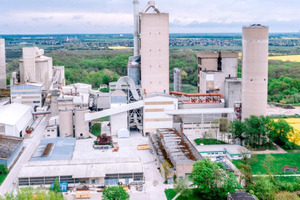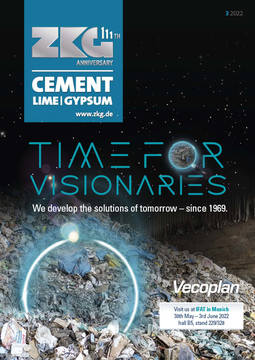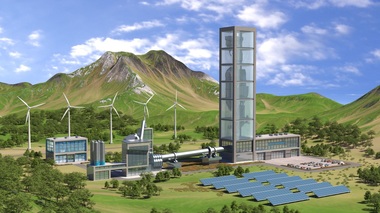Green light for LEILAC 2 carbon capture project at HeidelbergCement’s plant in Hanover/Germany
The LEILAC 2 (Low Emissions Intensity Lime And Cement) carbon capture project has successfully passed its Financial Investment Decision milestone, confirming that the project can now enter the implementation phase. Together with the Australian technology company Calix and a European consortium, HeidelbergCement will proceed to build a demonstration facility integrated into HeidelbergCement’s plant in Hanover/Germany. The installation will be capable of capturing 20% of the cement plant’s CO2 emissions, corresponding to around 100000 t of CO2 per year.
“LEILAC 2 is one of several carbon capture projects we are currently pursuing at HeidelbergCement,” says Dr Dominik von Achten, Chairman of the Managing Board: “We are very pleased to advance this key technology at industrial scale at our plant in Hanover/Germany. The location is ideally suited for further utilisation and/or transport to offshore storage of the captured CO2.” The company targets CO2 reductions of up to 10 million t with several CCUS projects already underway by 2030.
As part of the prior LEILAC 1 project, a CO2 capture pilot installation with a capture capacity of 25000 t of CO2 per year had been developed at Heidelberg-Cement’s Lixhe plant in Belgium. With LEILAC 2, an installation around four times as large will be operated in Hanover. The project now enters the detailed design phase through 2022, followed by procurement and construction of the plant itself. Construction is expected in 2023, dependent on flag points over the coming months. The project scope for LEILAC 2 also includes a thorough analysis of the potential destination of the captured CO2, either for utilisation purposes or for safe geological offshore storage.
With the patented LEILAC technology, the CO2 released during cement production can be captured in a highly pure form via a separate waste gas stream and used in other processes. As minimal additional energy is needed and no chemicals are required, this happens in an especially cost-efficient way. The technology can also be retrofitted in a modular form at any scale and use any fuel or energy source, including biomass, hydrogen, or electricity – providing a ‘future proof’ solution.




